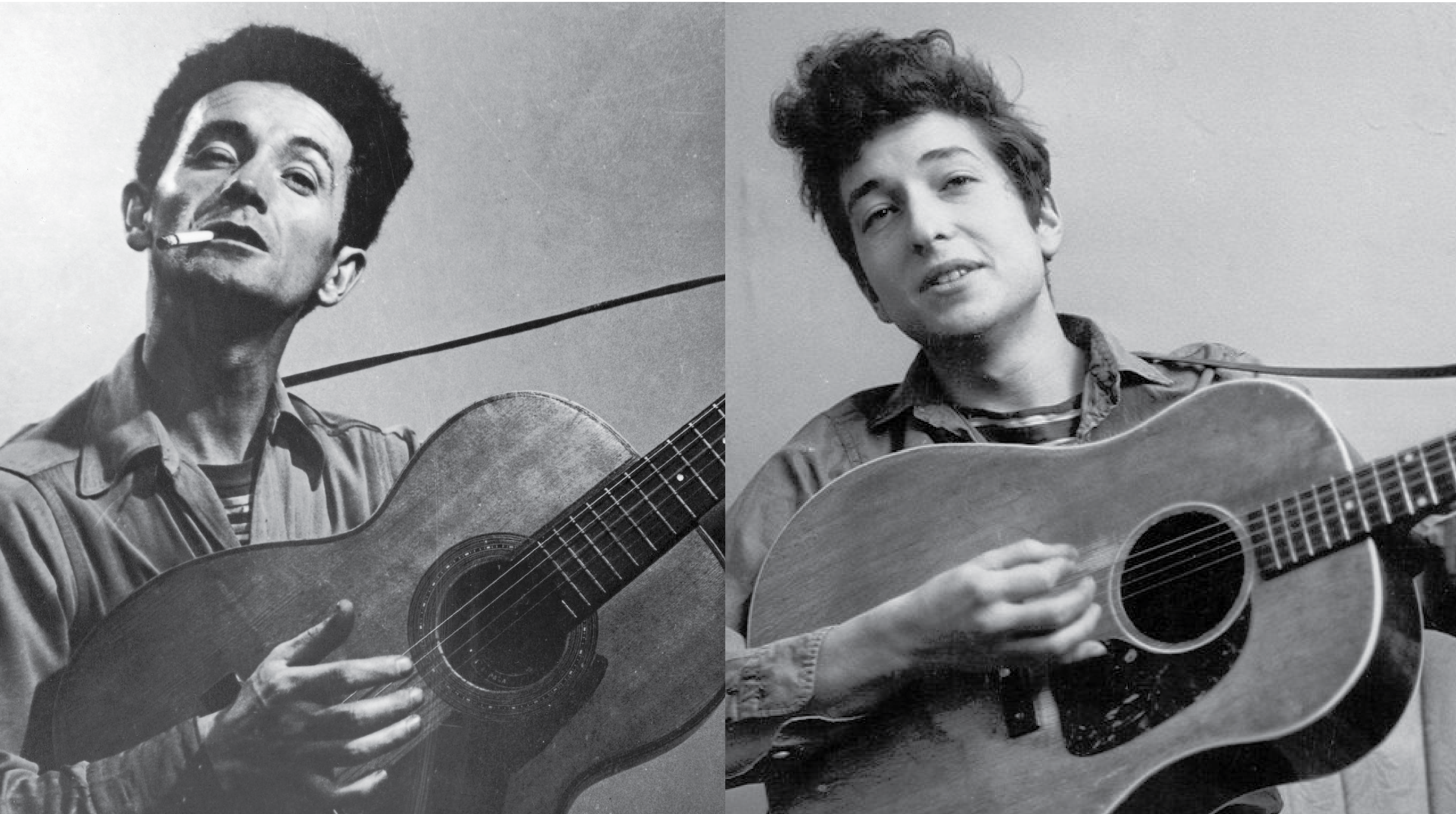“Song to Woody” – When Bob Dylan Met Woody Guthrie
In the middle of a frigid January in 1961, 19-year Bob Dylan embarked on a road trip from Minnesota to New York City with little more than a guitar and suitcase. Dylan had just dropped out of the University of Minnesota after a little more than a year. Two key motivators compelled the young musician to make the 24-hour long drive in the bitter mid-winter to swap the Midwest for the East Coast. The first of which was the chance to trade in small cafes filled with college students with opportunities to perform on the same hallowed stages of the greats he admired. The second was to seek out and meet one of those idols, Woody Guthrie.
According to most accounts, Bob Dylan arrived in Greenwich Village on the 24th of January. He stepped out onto the snow-lined sidewalks that boasted New York City’s coldest winter in 28 years and drifted into a venue called Cafe Wha? on Macdougal St. That night happened to be an open-mic and marked Dylan’s stage debut in what would become his city. Dylan biographer Howard Sounes wrote that Bob approached the microphone that night and declared to the crowd that, “[I’ve] been travelin’ the country, followin’ in Woody Guthrie’s footsteps.”
Dylan had long been inspired by Woody Guthrie and was further spurred to meet the folk legend after reading Guthrie’s autobiography, “Bound for Glory.” The book chronicled Guthrie’s childhood, roving across America, and eventually gaining validation as a folk singer. Bob Dylan set forth on the same path and envisioned himself as an heir to Guthrie’s legacy. In the early 1940s, Guthrie also found himself in New York by way of California after a mass exodus uprooted him from his home in Oklahoma during the Dust Bowl. Guthrie’s time in New York is what helped solidify his title as the “Dust Bowl Troubadour,” and one of America’s most recognized raconteurs with his politically motivated and revolutionary folk songs. Guthrie’s impassioned and incendiary music sparked Bob Dylan to follow the same trajectory.
By the time Dylan came to New York, Woody’s health had steadily declined due to his fight with Huntington’s disease. Guthrie, age 48 at the time, had been residing at Greystone Park Psychiatric Hospital in New Jersey. On January 29th, 1961, five days after arriving in New York, Bob Dylan went to meet Woody Guthrie for the first time.
Dylan was able to play in front of his idol and despite his failing condition, Guthrie was able to impart a message to his spiritual successor in the form of a card that read, “I ain’t dead yet.” It was after that fateful encounter that Bob Dylan went on to write and perform “Song to Woody” as a tribute, eventually recording it as one of two original compositions for his debut album. “Song to Woody” was about more than just the life of Woody Guthrie, it borrowed the melody from one of Guthrie’s very own songs, “1913 Massacre,” invoking an old folk tradition of adopting another musician’s work.
As Dylan’s presence in the scene grew more prominent and new generations of folk musicians began to revive the genre, Woody Guthrie’s indelible imprint on the musical landscape became even more clear. Guthrie passed away in the fall of 1967, but his cadence, playing style, and sense of conscience continued to be heard in the music and musicians that he inspired. Bob Dylan took the torch and forged a path of his own, introducing Woody’s legacy and influence to brand new audiences across the country for 60 years – and counting.
Listen to the Blackwing Guide to Bob Dylan – playlist on Spotify

